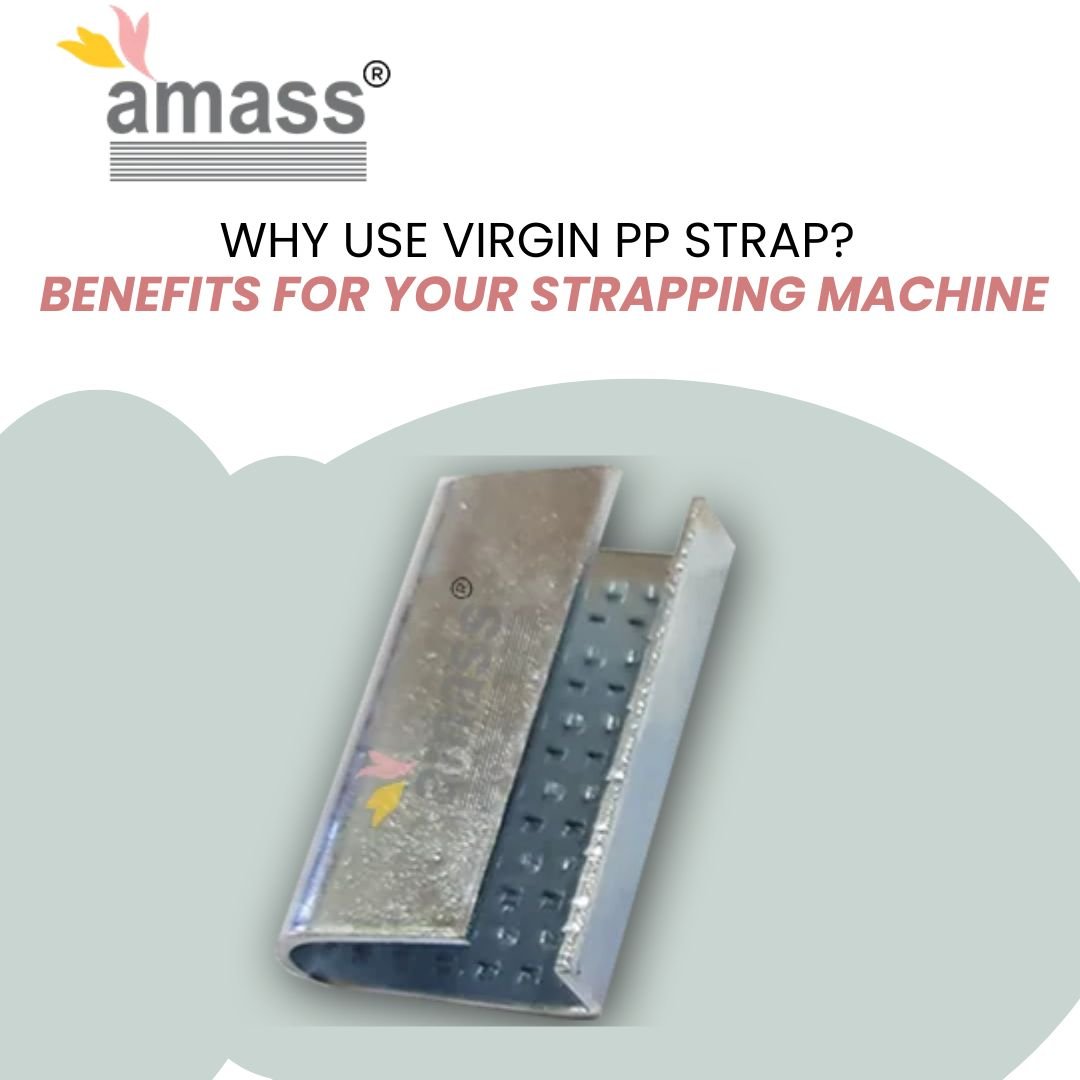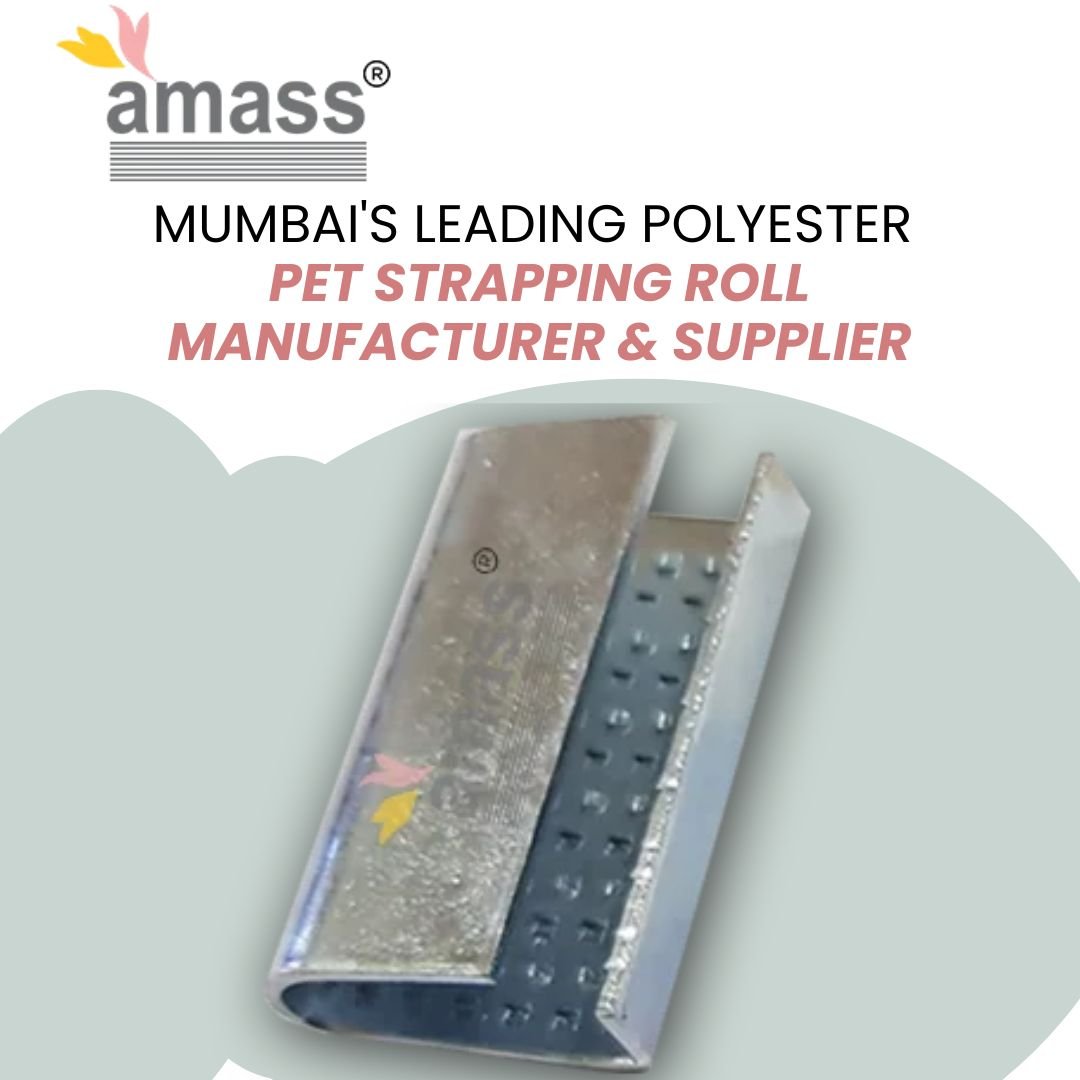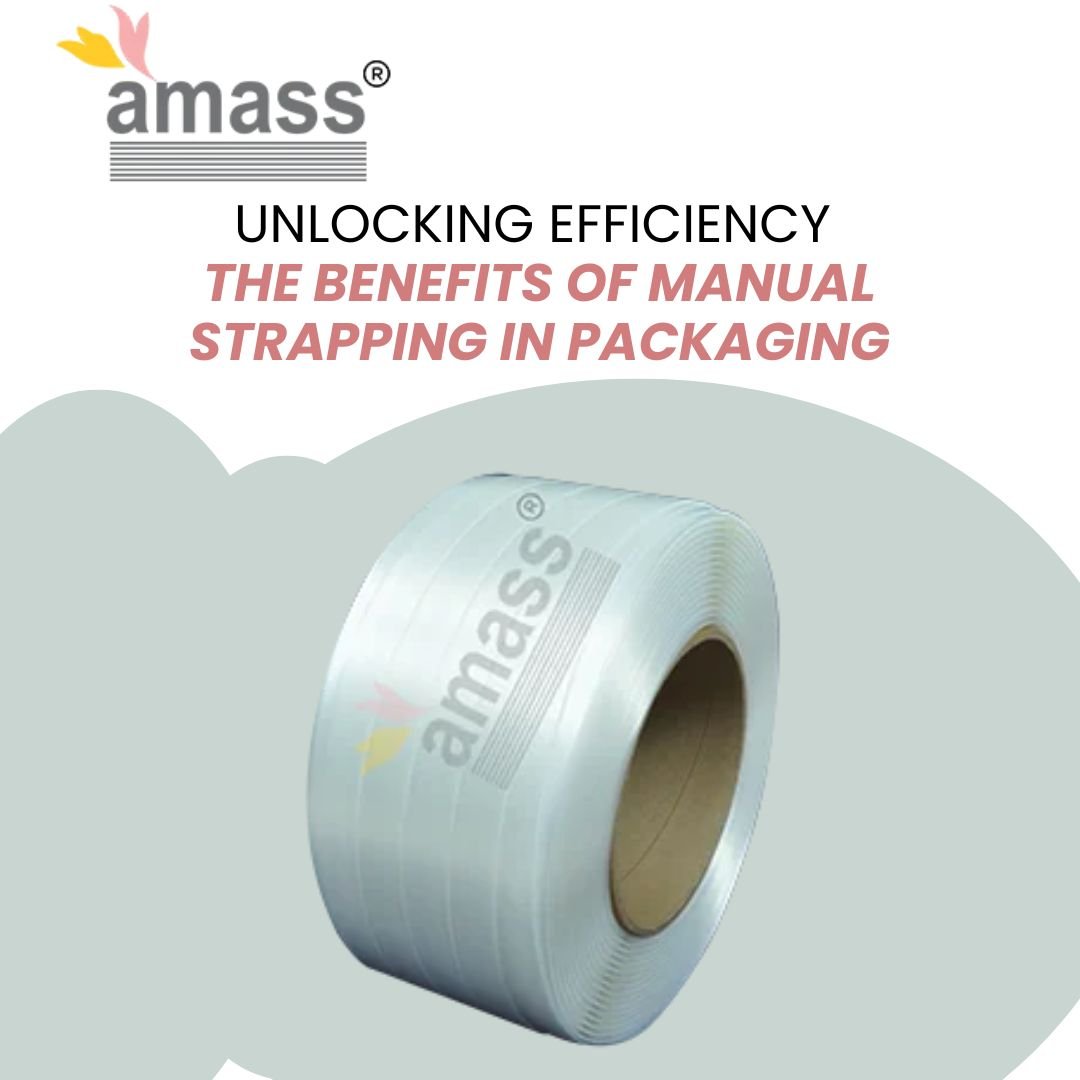Strapping Solutions for Every Type of Bulk Packaging

The Ultimate Guide to Choosing the Right Polyester Cord Strapping Manufacturer for Your Business
March 19, 2025
Container Loading Guide: Weight Distribution & Securing Cargo
May 31, 2025In today’s hyper-competitive logistics landscape, how your products are secured during transport can make the difference between profit and catastrophic loss. The right strapping solution doesn’t just hold items together-it serves as the critical backbone of your entire supply chain integrity. When properly implemented, strategic strapping approaches can reduce damage rates by up to 27% while simultaneously cutting packaging costs by 15-20% compared to alternative securing methods.
Introduction: The Critical Role of Strapping in Modern Bulk Logistics
In the fast-paced world of logistics and distribution, ensuring the safe and efficient transportation of products is critical. Businesses face the challenge of protecting their products while minimizing costs, but without sacrificing efficiency. One solution that has consistently proven to meet these challenges is strapping. Whether it’s for securing loads on pallets, bundling products, or ensuring the integrity of packages, strapping plays a key role in maintaining order in logistics and distribution.
Strapping secures packages tightly together ensuring that items stay in place throughout transportation. This level of load security is essential for both light and heavy goods, preventing accidents, minimizing damaged products, and enhancing overall safety. Without proper stabilization, products can shift and move during transportation due to road vibrations, sudden stops, or turns, leading to damage, financial loss, and customer complaints.
Beyond security, strapping is an incredibly cost-effective method for securing goods. It often requires fewer materials than other types of load securing solutions such as shrink wrapping or bulky containers, leading to reduced packaging costs. Additionally, the use of strapping can help reduce the need for larger shipping containers or pallets since it effectively holds goods together without requiring extra space.
Strapping’s versatility makes it an essential tool across various industries. From large steel coils to fragile boxes, strapping can be adapted to meet specific needs. This adaptability ensures that businesses can protect their products during transportation, regardless of their size, shape, or weight.
Understanding Bulk Packaging: Challenges, Requirements, and Expectations
The packaging industry is undergoing a paradigm shift, moving away from traditional plain corrugated boxes to more sophisticated solutions that address evolving challenges. With government norms, constantly changing consumer trends, and industry-specific requirements, businesses must navigate a complex landscape to ensure their bulk packaging meets all necessary criteria.
One of the primary challenges facing the packaging industry is sustainability. As environmental concerns grow and consumers demand more eco-friendly practices, packaging companies must prioritize sustainable solutions. This includes using biodegradable materials, implementing recycling programs, and adopting digital printing techniques to reduce waste and improve quality. For bulk packaging, this means finding strapping solutions that are environmentally friendly without compromising on strength and durability.
Rising costs present another significant challenge for packaging businesses. Fluctuating prices for packaging materials and production, combined with increased demand for personalized packaging, can put pressure on profit margins. The rising costs of raw materials, energy, and transportation all contribute to this challenge. To address this, businesses can turn to automation to boost production efficiency and reduce labor costs. For bulk packaging specifically, finding cost-effective strapping solutions that provide adequate security without breaking the bank is essential.
Compliance with regulations is also becoming increasingly complex. Packaging regulations vary between countries and industries, making it challenging for businesses to stay compliant across all markets. This requires careful monitoring of regulatory updates, consultation with legal experts, and thorough requirement-gathering during production to ensure all standards are met. For bulk packaging, this means ensuring that strapping solutions comply with all relevant regulations, including those related to transport safety and environmental protection.
Anatomy of a Strong Strap: Materials, Designs, and Durability Factors
Core Materials Driving Performance
Polypropylene (PP) strapping stands as the lightest and most economical strapping material available on the market today. Its exceptional flexibility and ease of handling make it perfect for securing lighter items into manageable units. Despite its featherweight nature, PP strapping boasts adequate tensile strength for most applications and can be applied either manually or through automatic machinery systems. Its inherent resistance to corrosion makes it suitable for both temporary and permanent applications, with the added advantage of being available in various colors and sizes to match specific business requirements.
“The relationship between a strap’s material composition and its performance is not linear-it’s exponential. Each 1mm increase in thickness doesn’t just add strength; it completely transforms how the entire system responds under dynamic transport conditions.”
Polyester (PET) strapping delivers substantially greater durability and tensile strength compared to polypropylene, making it the ideal choice for securing heavier loads in challenging environments. It’s increasingly replacing traditional steel strapping in many applications because, while it doesn’t exceed steel’s raw strength, it doesn’t suffer from elongation issues that lead to tension loss over time-a critical advantage for long-distance transport scenarios. This stability makes PET strapping particularly well-suited for packaging medium to heavy products, including pallets, large and small containers, and construction materials.
Structural Design Innovations
Beyond material composition, the structural design of modern strapping has evolved significantly. Today’s high-performance straps feature:
- Reinforced edge technology that prevents fraying and tearing
- Micro-textured surfaces for improved grip and reduced slippage
- Uniform thickness profiles ensuring consistent tension distribution
- UV-resistant additives for straps used in outdoor environments
- Specialized coatings that enhance moisture resistance
These design elements work synergistically with the base material to create strapping solutions that maintain their integrity even under the most challenging transport conditions.
Choosing the Right Strapping Solution Based on Bulk Packaging Types
Selecting the appropriate strapping solution requires understanding the unique demands of your specific bulk packaging scenario. Different packaging configurations demand tailored approaches to ensure optimal security and product protection.
Light to Medium Packaging Solutions
For lightweight cartons and boxed products weighing under 50kg, polypropylene (PP) strapping delivers exceptional value. Its flexibility and ease of handling make it perfect for securing boxed products, bundled items, and palletized loads with light to medium weight. PP strapping excels in industries like retail, food & beverages, and printing, where it effectively secures items such as newspapers, magazines, and standard shipping cartons. Its economical nature and corrosion resistance provide substantial benefits for these applications, especially in climate-controlled environments.
Heavy-Duty Applications
When securing loads exceeding 100kg, polyester (PET) strapping becomes the material of choice. With its superior tensile strength and remarkable durability, PET strapping efficiently handles demanding applications involving large containers, construction materials, and industrial equipment. Unlike other options, PET strapping maintains consistent tension throughout the transportation journey, as it doesn’t suffer from the elongation issues that plague alternative materials. This tension stability ensures your heavy products remain firmly secured from departure to destination.
Specialized Bulk Container Solutions
For Flexible Intermediate Bulk Containers (FIBCs), commonly known as bulk bags, specialized strapping approaches are essential. FIBC Stevedore Straps, strategically positioned at the top corners of these containers, are engineered to withstand the concentrated weight and stress points during lifting and transportation. These specialized straps create secure attachment points for lifting equipment, dramatically reducing the risk of catastrophic failures that could damage valuable cargo or injure personnel.
When evaluating your strapping needs, consider these critical factors:
- Total load weight (including dynamic forces during transport)
- Distance and duration of shipment
- Environmental exposure (temperature, humidity, UV exposure)
- Handling methods throughout the logistics chain
- Regulatory requirements for your specific industry and regions
By methodically assessing these factors, you can select strapping solutions that provide optimal protection while avoiding unnecessary costs from over-engineering or the catastrophic consequences of under-engineering your bulk packaging security.
Innovations by Amass: Raising the Standard for Strapping Excellence
Since its establishment in 2012, Amass Strapping Solution has revolutionized the strapping landscape through persistent innovation and unwavering quality standards. Based in Rajkot, Gujarat, the company has rapidly distinguished itself through superior engineering approaches that address longstanding challenges in the strapping industry.
What truly sets Amass apart is their comprehensive ecosystem of strapping solutions designed to seamlessly integrate with diverse transportation modalities. Their specialized systems for road, air, ship, and train transport ensure businesses can implement consistent securing protocols regardless of how their products move through the supply chain. Their extensive product portfolio encompasses Cord Polyester Strapping, Container Lashing Strips, Plastic Drum Container Lashing Straps, Wire Buckles Cord Strapping, and numerous other specialized solutions tailored to specific industry challenges.
The foundation of Amass’s innovation strategy lies in their collaborative development approach. Rather than creating generic products, they work intimately with clients to understand specific operational requirements and develop tailored solutions with precise performance characteristics. This ensures businesses receive strapping systems optimized for their unique challenges rather than compromising with one-size-fits-all alternatives.
Beyond product innovation, Amass has embraced broader societal initiatives that reflect their forward-thinking philosophy. Their support for “Make in India” demonstrates their commitment to strengthening domestic manufacturing capabilities and reducing dependency on imported strapping solutions. Similarly, their embrace of “Digital India” has led to the integration of digital tracking and monitoring capabilities in their advanced strapping systems, providing unprecedented visibility into securing effectiveness throughout the logistics journey.
As their Managing Director recently noted: “The future of strapping isn’t just about holding things together-it’s about creating intelligent securing systems that communicate their status in real-time, anticipate potential failures, and adapt to changing conditions throughout the journey.”
Applications Across Industries: Tailored Strapping for Every Sector
Retail and E-Commerce: Balancing Protection with Presentation
In the competitive retail landscape, packaging must simultaneously protect products and enhance brand perception. Polypropylene strapping has emerged as the solution of choice, offering sufficient securing strength for typical retail items while maintaining a clean, professional appearance. For e-commerce operations shipping thousands of parcels daily, PP strapping integrated with automated application systems can increase throughput by up to 400% compared to manual securing methods, dramatically improving operational efficiency while maintaining consistent securing quality.
Food and Beverage: Meeting Stringent Safety Standards
The food and beverage industry operates under uniquely demanding conditions where strapping must meet hygiene requirements while withstanding temperature variations, moisture exposure, and potential chemical interactions. Specialized food-grade PP strapping with antimicrobial properties has become the gold standard, preventing contamination risks while securing everything from beverage pallets to frozen food containers. These specialized strapping solutions maintain their integrity in temperatures ranging from -40°C to +60°C, ensuring products remain secure throughout cold chain logistics systems.
Construction and Manufacturing: Maximum Strength for Maximum Challenges
When securing heavy construction materials or manufacturing components, ordinary strapping simply won’t suffice. Polyester (PET) strapping with tensile strengths exceeding 15,000N has revolutionized how these industries secure and transport their products. Unlike traditional steel strapping, PET maintains consistent tension throughout transportation without the elongation issues that lead to load shifting and damage. This critical advantage has made PET the preferred choice for securing everything from brick pallets and lumber to manufactured steel components and industrial machinery.
Transportation and Logistics: Multimodal Security Systems
For logistics providers handling diverse cargo types across multiple transportation modes, Amass has developed integrated strapping systems specifically designed for each transport environment. Their specialized solutions for road, air, ship, and train transport address the unique forces and challenges present in each modality. For instance, their ship transport strapping systems incorporate enhanced moisture resistance and salt-spray protection, while their air transport solutions prioritize lightweight designs that minimize dimensional weight charges without compromising security.
Bulk Material Handling: FIBC Specialized Solutions
Industries utilizing Flexible Intermediate Bulk Containers (FIBCs) for bulk material transport require specialized strapping approaches. FIBC Stevedore Straps positioned at container corners provide critical lifting points capable of supporting loads up to 2,000kg. These engineered straps distribute weight evenly, enhancing stability during lifting operations while reducing stress on the bag’s structural seams. For operations handling hazardous materials or valuable bulk products, heavy-duty variants offer increased strength and redundant securing points that prevent catastrophic failures.
Performance and Safety: How Superior Strapping Protects Your Shipments
The consequences of inadequate strapping extend far beyond simple product damage-they can impact your entire operation’s profitability and reputation. Superior strapping solutions deliver measurable performance improvements across multiple key metrics.
Properly engineered strapping dramatically enhances load stability by counteracting the complex forces packages experience during transport. When products travel long distances, they encounter road vibrations, sudden directional changes, elevation shifts, and sometimes emergency stops-all factors that can cause inadequately secured loads to shift, deform, or completely fail. Professional-grade strapping creates a unified structural system that distributes these forces throughout the entire package rather than allowing them to concentrate at vulnerable points.
For businesses utilizing Flexible Intermediate Bulk Containers (FIBCs), specialized stevedore straps provide critical reinforcement at high-stress lifting points. These engineered components are designed to withstand dynamic forces that can reach 5-10 times the static weight of the load during lifting operations. Properly installed stevedore straps ensure secure attachment to lifting equipment, virtually eliminating the catastrophic failures that can result in product loss, equipment damage, or workplace injuries.
Beyond physical protection, superior strapping delivers significant operational benefits by streamlining material handling processes. Effective strapping solutions facilitate more efficient loading, unloading, and transportation of bulk materials, reducing handling times by up to 35% compared to alternative securing methods. This efficiency translates directly to improved throughput, reduced labor costs, and enhanced capacity utilization throughout your logistics network.
Different strapping configurations offer specialized performance characteristics for specific applications. Sewn stevedore straps provide reliable lifting points suitable for standard bulk bag applications, while cross-corner configurations distribute weight more evenly, enhancing stability during lifting while reducing stress concentration at bag seams. For applications involving exceptionally heavy loads or hazardous materials, heavy-duty variants incorporate redundant securing systems and reinforced attachment points that maintain integrity even if primary securing points become compromised.
By investing in properly engineered strapping solutions, businesses protect not just their products but their entire operational reputation. The right strapping ensures consistent delivery quality, maintains customer satisfaction, and ultimately protects your bottom line from the substantial costs associated with in-transit damage and delivery delays.
Efficiency in Action: Tools, Techniques, and Automation for Optimal Strapping
The evolution of strapping technology has transformed what was once a labor-intensive manual process into a sophisticated, automated system that delivers consistent results while dramatically improving throughput capacity.
Manual vs. Automated Systems: Finding Your Efficiency Sweet Spot
Modern strapping operations exist on a spectrum from fully manual to completely automated. Manual tools-including tensioners, sealers, and cutters-offer flexibility and relatively low initial investment but require skilled operators and deliver lower throughput. For operations processing fewer than 50 packages daily, these manual systems often provide the most cost-effective solution.
Semi-automated systems incorporate mechanical assistance while retaining human oversight. These systems typically feature strapping heads that automatically tension, seal, and cut the strap while operators position packages and guide initial strap placement. For medium-volume operations processing 50-200 packages daily, these systems deliver an optimal balance between investment and throughput efficiency.
Fully automated strapping machines represent the pinnacle of strapping efficiency. These systems require minimal human intervention, automatically feeding, tensioning, sealing, and cutting straps at rates exceeding 30 packages per minute. Polypropylene strapping integrates seamlessly with these systems, enabling dramatic productivity improvements that offset rising material and labor costs. In high-volume environments, these automated systems can reduce per-package strapping costs by up to 40% compared to manual methods.
Technique Optimization: The Human Element Remains Critical
Even with advanced automation, proper technique remains essential for optimal strapping performance. Key technique elements include:
- Strategic strap placement to counteract primary stress vectors
- Appropriate tension calibration based on package contents and transportation conditions
- Consistent overlap length at joining points to ensure secure bonding
- Regular inspection protocols to identify potential system issues before failures occur
- Standardized operator training to maintain consistent quality standards
“The difference between adequate strapping and exceptional strapping isn’t in the materials-it’s in the methodology. A perfectly engineered strap applied incorrectly provides less protection than a basic strap applied with expert technique.”
Integration With Broader Packaging Workflows
Forward-thinking operations are increasingly integrating strapping processes into comprehensive packaging workflows. Web-to-pack solutions enable customers to design custom packaging specifications, including strapping requirements, through intuitive online interfaces. These integrated systems automatically translate design requirements into production specifications, ensuring consistent implementation while reducing communication errors.
By adopting efficient strapping tools, optimizing techniques, and integrating with broader packaging workflows, businesses can simultaneously improve package security, increase throughput, and reduce operational costs-creating a competitive advantage in today’s challenging logistics environment.
Conclusion: Strapping Smart for Stronger, Safer, and Smarter Packaging
In today’s logistics landscape, where every efficiency gain translates directly to competitive advantage, strategic strapping approaches deliver measurable benefits throughout your entire supply chain. The right strapping solution doesn’t merely secure your products-it optimizes your entire operation.
The evidence is clear: properly implemented strapping solutions deliver remarkable stability improvements, dramatically reducing product damage during transportation while minimizing the associated costs of returns, replacements, and customer dissatisfaction. Beyond physical protection, optimized strapping approaches reduce material usage compared to alternative securing methods, delivering both cost savings and sustainability benefits that align with growing environmental imperatives.
As packaging challenges continue to evolve-driven by sustainability concerns, rising material costs, and increasingly complex compliance requirements-the importance of selecting appropriate strapping solutions becomes even more critical. Companies like Amass Strapping Solution demonstrate how innovation in this space continues to deliver new capabilities, from specialized transportation-specific systems to integrated digital monitoring features that provide unprecedented visibility into securing effectiveness.
For entrepreneurs entering the logistics and distribution space, understanding the nuances of different strapping materials and applications provides a foundation for operational excellence. Whether you’re handling lightweight retail products with polypropylene strapping or securing heavy industrial components with polyester systems, matching the right solution to your specific requirements ensures optimal protection while avoiding unnecessary costs.
The future of strapping technologies promises even greater integration with broader supply chain systems. As IoT sensors become more affordable and widespread, we’ll likely see the emergence of “smart strapping” that actively monitors tension, detects potential failures before they occur, and provides real-time status updates throughout the transportation journey. These innovations will further enhance the already substantial benefits that strategic strapping delivers.
Remember that exceptional strapping isn’t just about the materials-it’s about implementing a comprehensive approach that considers your products, your transportation methods, your handling procedures, and your customer expectations. By strapping smart, you’re building a foundation for logistics excellence that will support your business growth for years to come.




